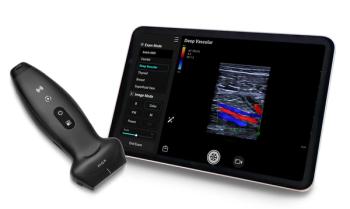
Real-world DAA therapy shows gains in community setting
Physicians have a “good, effective, safe therapy available” for hepatitis C virus genotype 6 patients, says researcher.
A combination of sofosbuvir and ledipasvir -- the first all-oral ribavirin-free treatment approved for chronic hepatitis C virus (HCV) genotype 6 -- offers a safe, highly efficacious treatment option even in a community-based, “real-world” setting, according to a new study.
The majority of chronic HCV infection in the United States is genotype 1a and 1b, however, HCV genotype 6 is commonly found in patients from countries in the Asia-Pacific regions.
“HCV genotype 6 is more prevalent than we think in areas where clinicians care for diverse populations, such as South East Asian immigrants,” Robert Wong, MD, assistant professor of medicine and director of research and education at Alameda Health System-Highland Hospital in Oakland, California, told Medical Economics.
“Most large-scale, real-world studies have focused on genotype 1 using non-interferon or ribavirin remedies, but there have not been many studies of all-oral direct-acting antiviral medications for genotype 6 in particular.”
The researchers published their
In November 2015, the FDA approved sofosbuvir/ledipasvir as the first all-oral ribavirin-free treatment regimen for patients with chronic HCV genotype 6. Current HCV treatment guidelines sponsored by the American Association for the Study of Liver Diseases and the Infectious Diseases Society of America recommend sofosbuvir/ledipasvir without ribavirin for 12 weeks regardless of the presence of cirrhosis or prior treatment experience.
Wong and colleagues conducted a retrospective, observational study of 65 adults, mean age 66.3 years, with chronic HCV genotype 6 treated with sofosbuvir/ledipasvir without ribavirin at a community gastroenterology clinic from November 2014 to May 2016. Among the patients, 41.5% had cirrhosis and 15.4% were treatment experienced.
Rates of undetectable virus at week four on treatment, at end of treatment and a sustained virologic response after 12 weeks of treatment (SVR12) were stratified by the presence of cirrhosis and prior treatment.
The results show that 97.3% of patients had undetectable virus at week four on treatment, 96.9% had undetectable virus at end of treatment, and 95.3% achieved SVR12. There were no significant differences in treatment outcomes based on baseline HCV viral load.
“With an all–oral regimen in genotype 6 patients, we found a high cure rate that corresponded with smaller populations in clinical trials. Our results in a real-world setting correlate with clinical trials. There was no significant increase in the side effects profile,” said Wong.
He noted that virtually all (98.5%) of the patients were Vietnamese, and therefore the results may not generalize to non-Vietnamese genotype 6 patients, but “we don’t expect that,” Wong said.
“This very effective therapy is safe and has few barriers for patients to receive treatment. It is more tolerable and patients are less likely to discontinue than with interferon-based therapy. This regimen will make it easier to meet the goal of eradicating genotype 6 HCV.”
Primary care physicians who see HCV patients, even those with genotype 6, “have a good, effective, safe therapy available. There is no reason to wait for newer therapies. They can treat these patients themselves or to refer to a specialist,” said Wong.
Newsletter
Stay informed and empowered with Medical Economics enewsletter, delivering expert insights, financial strategies, practice management tips and technology trends — tailored for today’s physicians.


















